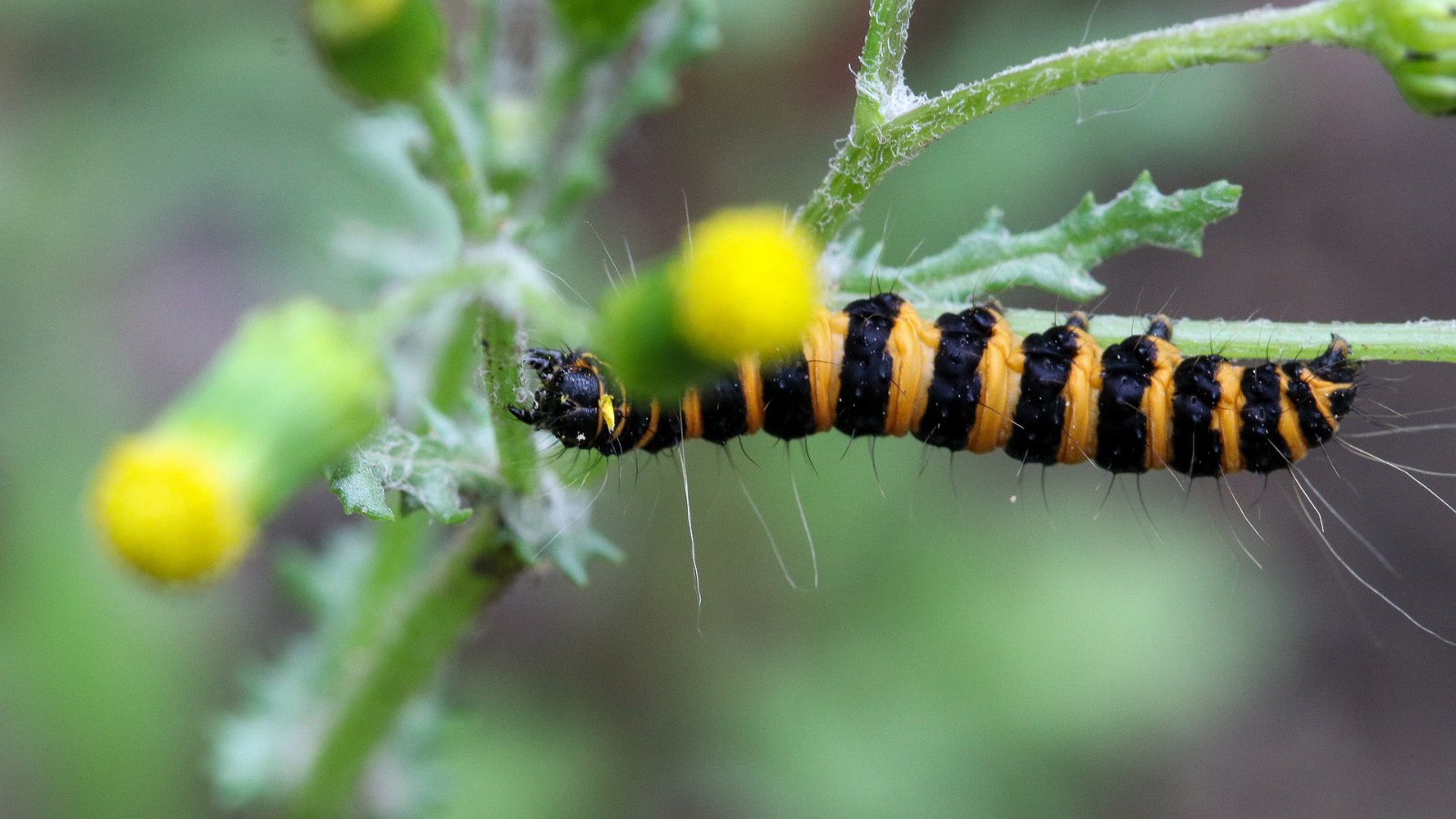The cinnabar moth is one of our most brightly coloured and is easily recognisable thanks to the dazzling patches of red which cover its otherwise black wings.
Overview
The Cinnabar is very common in Britain and is one of a small group of day flying moths. This means that they are likely to be seen during their active months between May and July. Their bright colours act as a warning sign to predators to steer clear or risk an unpalatable and poisonous meal, though some species of Cuckoo are resistant to these poisons. Females can lay up to 300 eggs, in large clutches of up to 60, on their preferred host plant, ragwort. The larvae are voracious eaters, often devouring their entire available food source before reaching maturity. As a result, Cinnabar larvae are known to become cannibalistic to prevent starvation (though cannibalistic behaviour sometimes begins before the host plant has been completely exhausted).

In the garden
The Cinnabar moth feeds on nectar so, like with many other moths, the presence of nectar rich plants in your garden is essential if you wish to attract them. More important, though, is the host plant of their larvae, ragwort or groundsel, which will allow them to breed and produce successful offspring.
Interesting facts
- The name, Cinnabar, comes from the distinctive red markings on the moth’s wings which are reminiscent of the red mineral of the same name.
- Many countries have introduced the Cinnabar as a biocontrol agent to subdue the poisonous ragwort plant.
